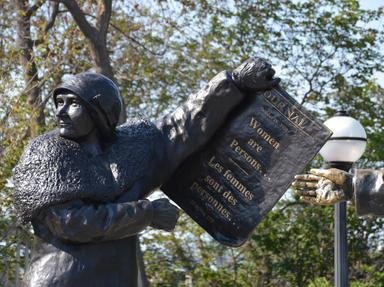Quiz Answer Key and Fun Facts
1. The anti-nuclear group Women Strike for Peace (WSP) march in Washington D.C., USA.
2. 'The Feminine Mystique' is published.
3. USA -- Title VII of the Civil Rights Act bans sex discrimination in employment
4. At an infamous beauty pageant protest in the USA, girdles and makeup were thrown into a trash can (but no bras were burned).
5. First Women's Studies course introduced at Cornell University (Ithaca NY)
6. The ERA is approved by the U.S. Congress and sent to the 50 states for ratification.
7. U.S. Supreme Court decision, Roe v. Wade, legalizes abortion nationwide
8. "Time" magazine declares the American Woman as its Person of the Year
9. The first Susan B. Anthony dollar coins were minted by the U.S. Mint
10. U.S. President Carter proclaims March 8, 1980 as National Women's History week.
Source: Author
gracious1
This quiz was reviewed by FunTrivia editor
gtho4 before going online.
Any errors found in FunTrivia content are routinely corrected through our feedback system.
